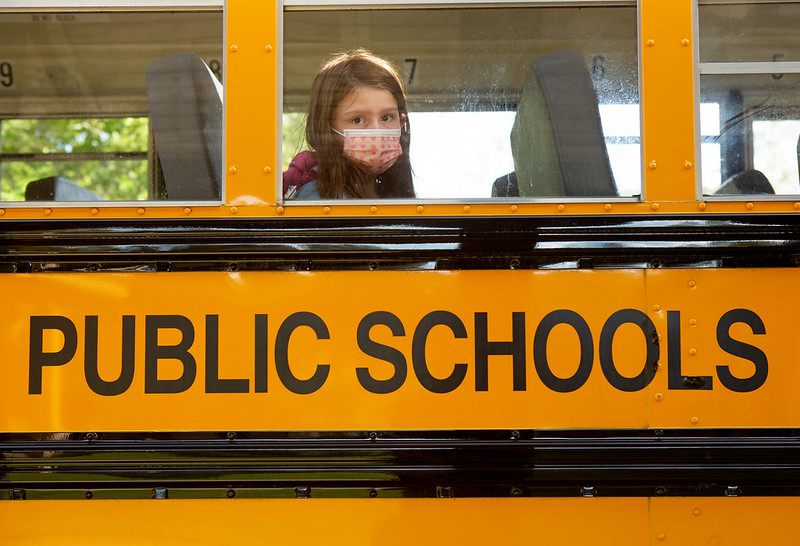Without the option to provide care online (you can’t exactly change a diaper over Zoom), child care centers have been forced to figure out how to bring children together safely.

The CDC just issued a strong recommendation that children return to in-person schooling as quickly as possible. After broad school closures earlier in the pandemic, about one-quarter of school districts are still completely virtual. Approximately half of schools across the country are using a hybrid model. Citing educational, developmental and mental health needs, federal health officials pointed out that there is little evidence schools have been the source of any widespread COVID-19 outbreaks.
This announcement will no doubt reignite the debates between city officials and teachers’ unions over how to reopen classrooms, or whether to reopen at all. What many people don’t realize, however (but many parents of young kids like me probably do) is that early childhood and infant care centers are already open, and have been largely operating in the background for much of the pandemic.
The online child care marketplace I co-founded has more than 200,000 day cares and preschools across the country on our platform. Our data shows that only about 10 percent of these centers closed permanently as a result of the pandemic. The rest have resumed in-person care. Without the option to provide care online (you can’t exactly change a diaper over Zoom), child care centers have been forced to figure out how to bring children together safely.
What has this experiment in a pandemic produced? The federal government has offered little in the way of guidelines for child care providers, so it may surprise people to know that in fact, day care centers—yes, full of sloppy, drooly kids—have fared surprisingly well during this crisis.
The CDC studied Head Start centers in eight states that operated throughout the pandemic and discovered these day care centers were not responsible for any large COVID-19 outbreaks. These findings are quite notable; Head Start programs serve low-income families, those known to be most vulnerable to COVID-19 infection. What was key here was that these programs had funding and resources to implement health and safety measures, such as masking and distancing. Schools will need the funding necessary to do the same.
Beyond proper funding, what thousands of operators across the country have learned could well serve as a model for schools to both implement measures to keep students and teachers safe, but also instill confidence that, yes, we can do this. The data we collected from providers confirms that while child care settings are not immune to COVID-19—the higher the community spread in your area, the greater the risk that someone is going to bring COVID-19 into your day care—it is absolutely possible to mitigate the risk of spreading the virus.
COVID Mitigation Techniques for Day Cares and Schools
A lot of recommendations have been thrown around, but safety for child care centers has come down to masking, podding and distancing. More specifically, adults and children ages 2 years and up should all wear masks. When children are unable to mask for things like meals and snacks, they should sit at least six feet away from each other and not share food.
Another key to preventing outbreaks is maintaining small groups. Centers who maintained small “pods” even within their center—consisting of the same staff and children—could handle cases of COVID-19 popping up without impacting the entire center. Staff members should absolutely not mix in person with other staff members or children if they belong to different pods.
These caregivers have also learned what doesn’t work. Early in the pandemic, much attention was given to daily temperature checks. They aren’t harmful, but can provide a very false sense of security. We now know that children are commonly asymptomatic and fever-free if they do become infected. Much better than temperature checks is routine, on-site testing for the virus, especially after holiday periods or traveling, as this can catch asymptomatic or pre-symptomatic cases.
As a parent myself, I understand firsthand the tension inherent in trying to balance our children’s needs with their safety, and the safety of their teachers and caregivers. For me though, the decision to send my kids back to their center was an easy one, because of the health and safety measures my children’s preschool had implemented. In the past six months, there have been a few positive cases in our preschool community, but they all remained isolated and did not spread through the school. This is the same thing we’re seeing with providers across the country who have implemented the same measures. These measures work.
At some point, all children will go back to school. The question is when. With vaccines rolling out, a president who has made in-person schooling a priority, and cases declining, we have the pieces in place to make this happen before this school year ends.
As we look to figure out how, we don’t have to reinvent the wheel. Let’s look to the child care providers who have been caring for children safely over the past 10 months and learn from their heroic efforts, so that school can once again be a place for children to come together and thrive—not only physically, but mentally, developmentally and socially as well.
You may also like:





